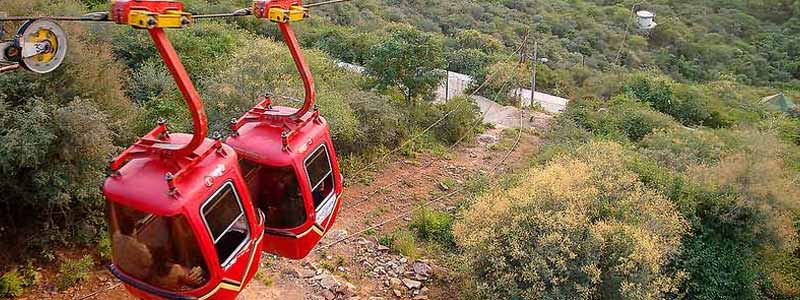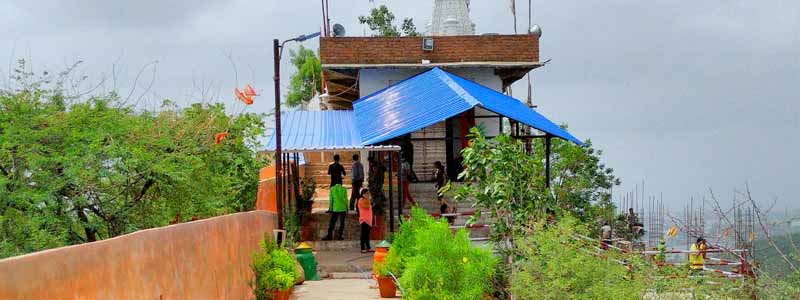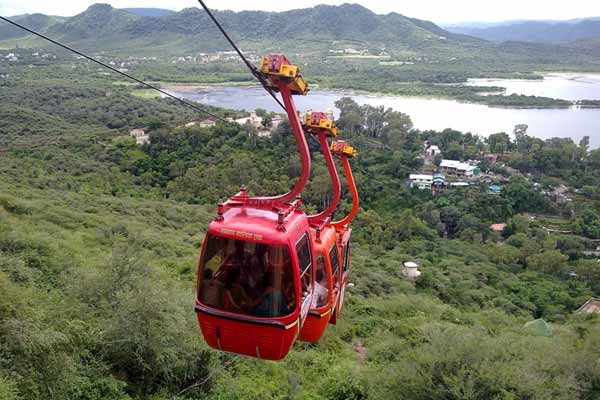Mansapurna Karni Ropeway was worked by specialist Kailash Khandelwal as a team with UIT in 2008. The ropeway interfaces the two places through a settled grasp mono link of 387 meters and is the principal ropeway of Rajasthan. The link auto introduced is likewise called Gondola meaning the compartment that is suspended from a carrier and is utilized for transportation of faculty.
In the wake of coming to the link auto stop point, one needs to stroll through strides to achieve Karni Mata’s Temple. Inside the sanctuary there is a white stone symbol of the goddess Karni Mata. One needs to walk or climb little will discover a sanctum of Pahad Wale Baba otherwise called Malang Sarkar at the Cannon Point, the Fort divider and an old distribution center with entryway, whose entryway board were studded with spikes.

History of Shri Mansapurna Karni Mata Temple
Shri Mansapurna Karni Ropeway is perched on the Machhala Hill Top and Deendayal Upadhyay Park in Udaipur. In 2008, it was constructed by a business personality Kailash Khandelwal. The project was a collaboration between Kailash Khandelwal and UIT. This temple was built on the height and a ropeway was designed to connect the temple and park. This ropeway is 387 meters long and has a capacity of carrying two people.

Places to visit near Shri Mansapurna Karni Mata Temple
Karni Mata Temple is located on the hill. Down the hill, there are a lot of places to visit around the temple. Such as-
- Doodh Talai Musical Garden
The Musical Garden is located near Shri Mansapurna Karni Mata Temple. In fact, it is the starting point of the temple. You will find this place in front of your eyes if you get down from the Karni Mata Temple. This place is famous for its sunset view and there is a musical fountain flowing in the middle of the garden. And it’s another attraction is Dudh Talai Lake.
- Nehru Park
If you are a nature lover, then this Garden is heaven for you. It is placed on the lower side of the hill. Climb down from Dudh Talai, take a turn and you will reach Nehru Park.
How To Reach Mansapurna Karni Ropeway
The Udaipur Karni Mata Temple is located approximately 25 KM away from the Udaipur airport and roughly 4 KM from the Udaipur Tour Package station and City Bus Depot. It is located in the center of the city where devotees care reach easily through local tongas, taxis and auto-rickshaws.
Visitors of the temple need only reach Doodh Talai Lake, from where ropeways will further help you reach the temple. The Temple is located at a distance of 5 minutes from the ropeway station. Visitors who prefer to reach the temple on foot can also take the help of the staircase accessible from the Manikya Lal Verma Park near the lake. Reaching this temple is not an easy deal.
But the hillock of Karni Matha temple will tempt you with its beauty. Easy way is to take a ropeway, then climb up a little bit to reach here. Some would climb all the way up too. There are staircases for the same. Whichever way you come, it’s all worth for the view you get from top of the hill.
